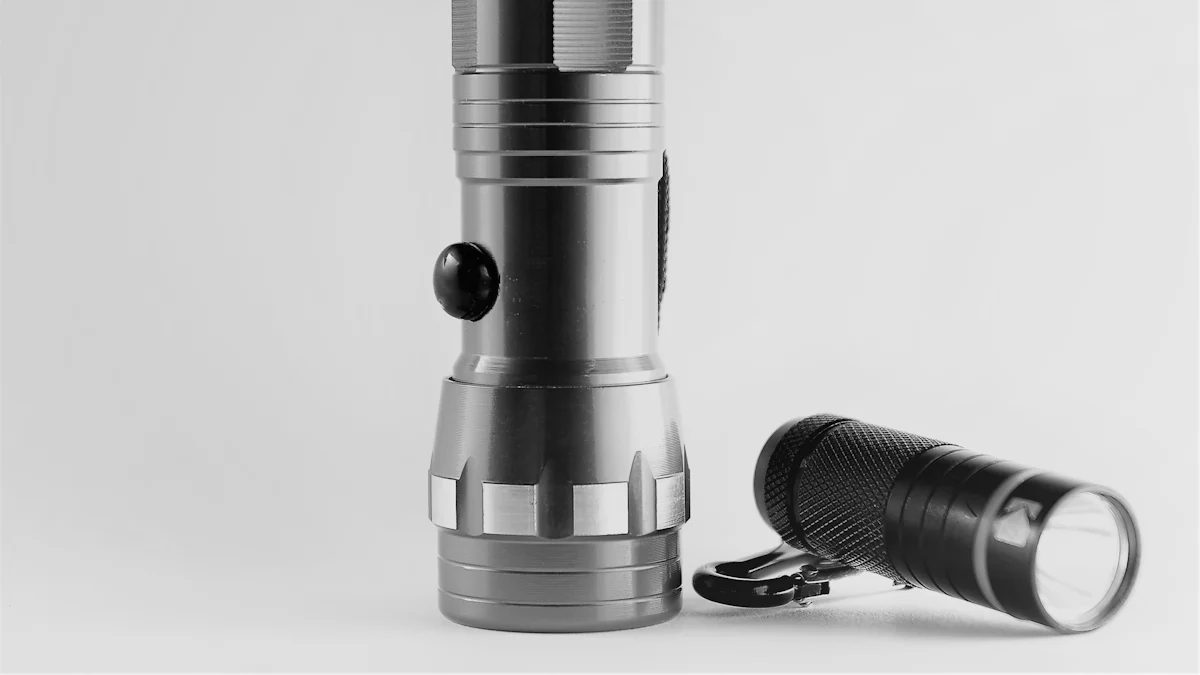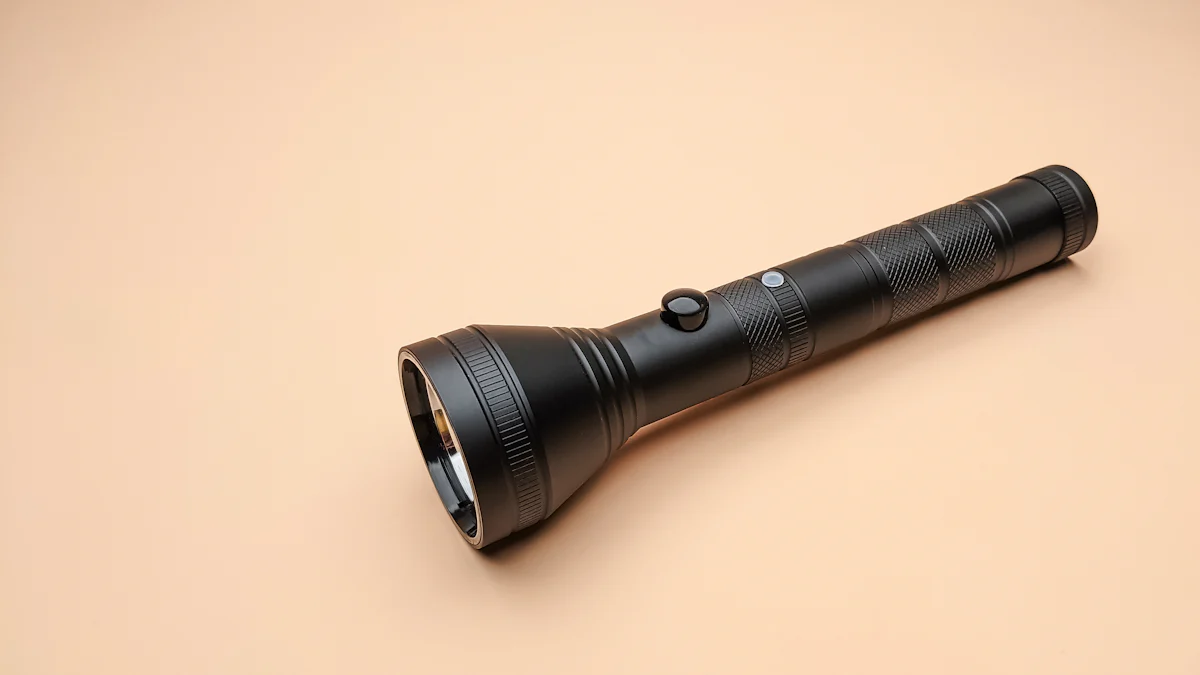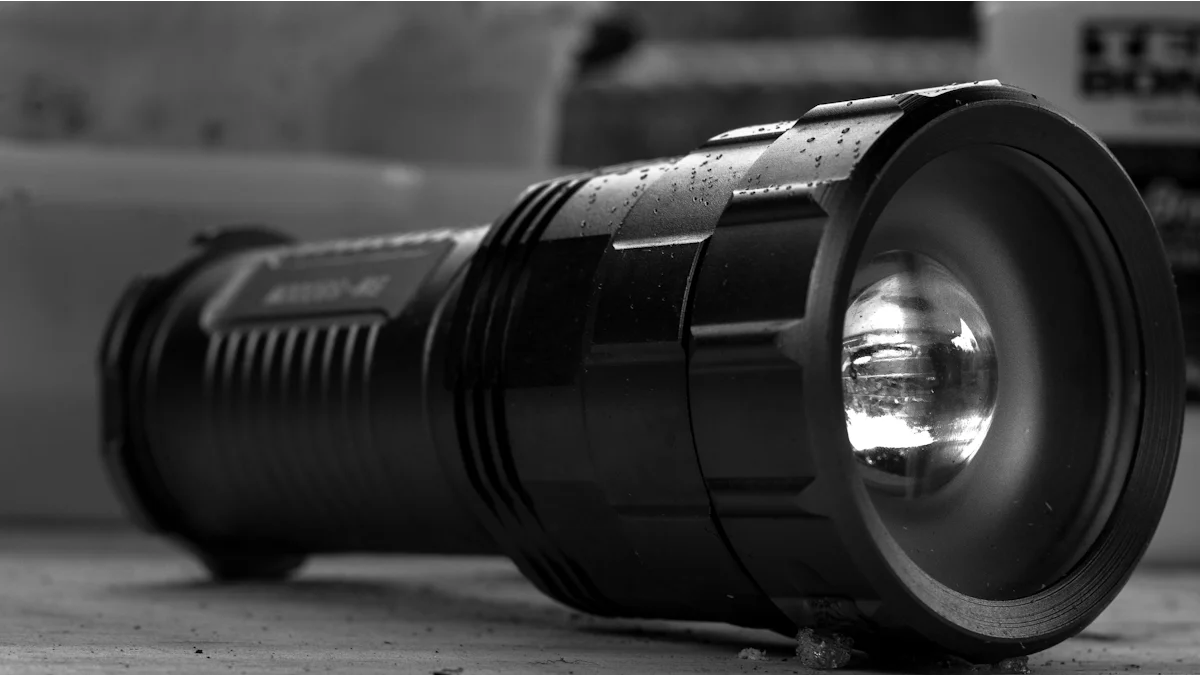Unveiling the Magic: How a Basic Flashlight Works

A basic flashlight is a simple yet essential tool that provides illumination in the dark. Its primary purpose is to light up surroundings, aiding visibility and safety. Understanding how a flashlight works is crucial for everyone, from campers to emergency responders. By unraveling its mechanisms, one can appreciate the synergy of components that enable this everyday marvel to shine bright.
How a Flashlight Works

When exploring the inner workings of a basic flashlight, one can uncover the fascinating journey of electricity and light production that culminates in illumination. Understanding the intricate dance between components like the battery, switch, bulb, and metal strip is key to grasping the magic behind this everyday device.
Electrical Flow
Battery Function
The battery within a flashlight serves as the powerhouse, providing the necessary energy for light production. As electrons flow from the battery's positive terminal to its negative terminal, a circuit is completed, kickstarting the process that leads to light emission.
Switch Mechanism
The switch of a flashlight acts as the gatekeeper of light, controlling when illumination begins and ends. By connecting two contact strips when switched on, it allows electricity to flow freely through the circuit, activating the bulb and casting away darkness.
Light Production
Incandescent Bulbs
In traditional incandescent flashlights, incandescent bulbs play a crucial role in light generation. When electricity courses through the filament within these bulbs, its high resistance causes it to glow brightly, emitting light that brightens up surroundings.
LED Technology
On the other hand, modern flashlights often utilize LED technology for their illumination needs. LEDs operate by exciting electrons within a semiconductor material, prompting them to emit photons and produce visible light. This efficient process not only conserves energy but also generates powerful beams of light.
By delving into how these components interact harmoniously within a basic flashlight, one can appreciate the blend of science and engineering that goes into creating such a simple yet indispensable tool.
Components of a Flashlight

Battery
Flashlights rely on various types of batteries to power their illumination. From disposable options to rechargeable ones like lithium-ion batteries, the choice of battery impacts the performance and lifespan of the flashlight. Recent advancements in battery technology have significantly enhanced the efficiency and durability of flashlights, especially those equipped with energy-saving LED bulbs. Studies confirm that LED technology consumes less power compared to traditional incandescent bulbs while delivering brighter light, making it a preferred choice for modern flashlights.
Types of Batteries:
Disposable batteries
Rechargeable batteries
Lithium-ion batteries
Battery Placement:
Ensures proper connection for electricity flow
Positioned strategically within the flashlight for balance and functionality
Bulb
The bulb is a vital component in any flashlight, dictating its brightness and efficiency. In today's market, many flashlights opt for LED bulbs due to their safety features and energy-efficient nature. These bulbs offer superior illumination while consuming minimal power, making them ideal for various applications beyond just flashlights.
Incandescent Bulb:
Traditional bulb type
Generates light through filament heating
LED Bulb:
Modern bulb technology
Produces light by exciting electrons in semiconductor material
Switch
The switch mechanism controls the activation and deactivation of a flashlight's light source. Understanding the different types of switches and their placements is crucial for efficient operation and convenience when using a flashlight.
Types of Switches:
Toggle switches
Push-button switches
Rotary switches
Switch Placement:
Positioned ergonomically for easy access
Enables seamless transition between light modes
Metal Strip
Conductivity
The metal strip within a flashlight serves as a conductor, allowing the flow of electricity between components. Its conductive properties enable the seamless transmission of electrons, ensuring a continuous circuit for light production.
Connection Points
Within the intricate design of a flashlight, connection points play a vital role in establishing links between the battery, bulb, switch, and metal strip. These points serve as junctions where electrical pathways converge, facilitating the smooth transition of energy throughout the device.
By understanding the conductivity of the metal strip and the significance of connection points, users can grasp how these fundamental elements work together to create a reliable source of illumination. Just as each piece plays a unique role in the functionality of a flashlight, their synergy highlights the precision and engineering behind this everyday tool.
Exploring the inner workings of a flashlight unveils a captivating journey of electricity and light production. The synergy between the battery, bulb, switch, and metal strip is essential for illumination. Understanding these key components sheds light on the magic behind this everyday tool. Recognizing the importance of basic electronics enhances one's appreciation for the engineering marvel that powers our path in the dark. By grasping how each part contributes to the whole, users can truly comprehend the brilliance encapsulated within a simple flashlight.
2024/6/7
See Also
Exploring Various Flashlight Varieties
Flashlight Progression: From Past to Present Innovations
Illuminate with Lumens: A Complete Brightness Overview
Selecting the Perfect Household Flashlight: An In-depth Manual
